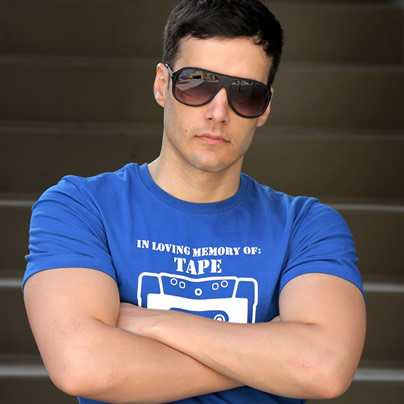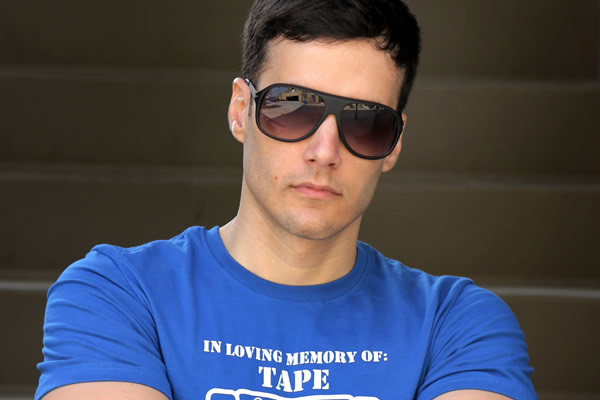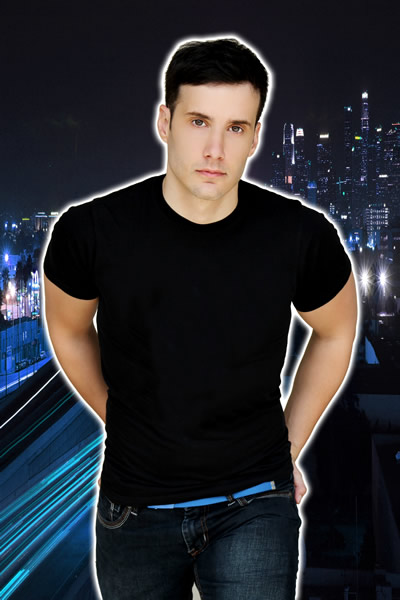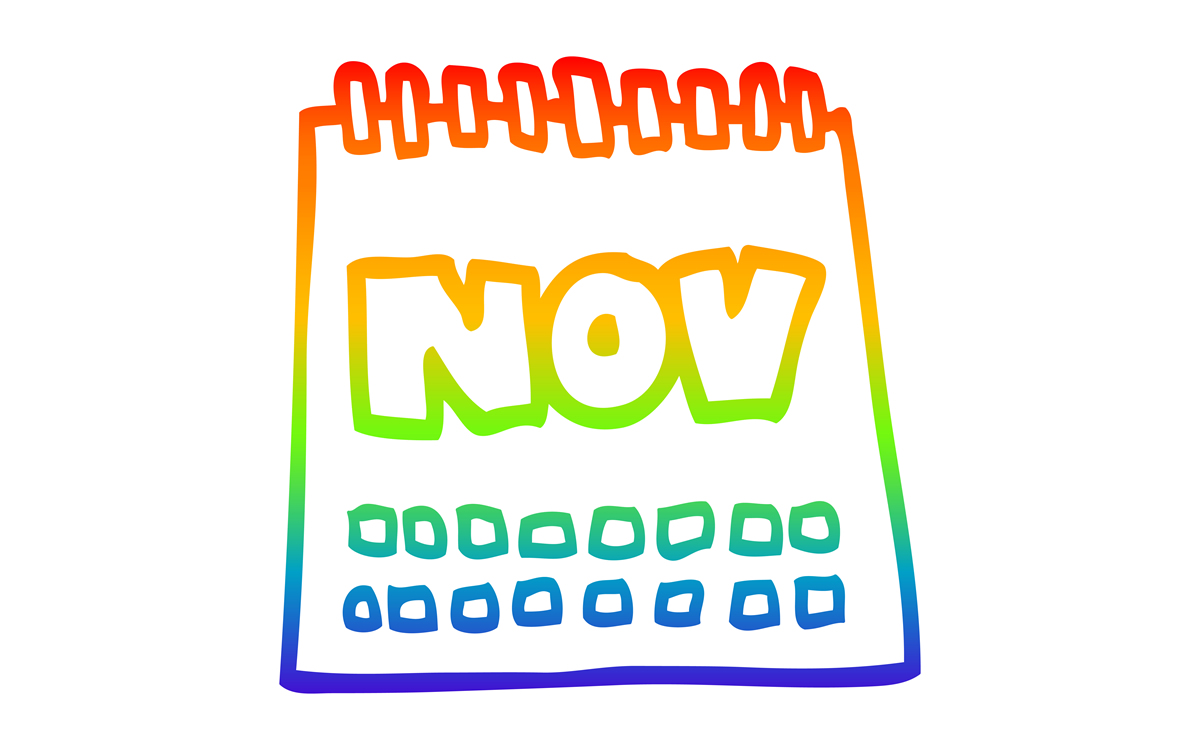Arts & Entertainment
‘He can really energize a dancefloor’
DJ Joe starts new monthly residency Friday at Cobalt


Joe Gauthreaux (Photo courtesy of Project Publicity)
The first song DJ Joe Gauthreaux remembers hearing on the radio was “Material Girl.” He was 5, it came on the car radio and made an indelible impression.
“It’s the first song I ever remember listening to as a child,” he says during a phone chat from Ft. Lauderdale. “My dad was like, ‘Ugh, that’s that Madonna,’ and … of course because they hated it so much, that made me love it all the more.”
He also feels kinship with Madonna because they share the same birthday — Aug. 16.
Gauthreaux — pronounced GO-troh — has gradually made a name for himself in the gay club scene over the last decade or so. Named “hottest DJ of the year” by Out Magazine in 2005, he’s remixed tracks for Kristine W., Jeanie Tracy and Tony Moran. Working with Joey Arbagey, an A&R rep at Universal, he’s broken into the major label world doing remixes for NeYo, The Wanted and Melanie Amaro. Three of his remixes are on the official maxi for teen idol Justin Bieber’s No. 2 (Hot 100) hit “Boyfriend.”
Now living again in New York after five years in Los Angeles, Gauthreaux is closer to D.C. He’s DJ’ed at Cobalt about four times in the last couple years and has now accepted a residency there that commences Friday from 10 p.m.-3 a.m.. It won’t always be the last Friday of the month — the next two installments are slated for Feb. 15 and March 15 — but Gauthreaux (djjoeg.com) will be there monthly. Cover is $10 and includes free vodka drinks from 11 to midnight. Keenan Orr spins downstairs (cobaltdc.com).
“After I moved back to New York, I talked to (Cobalt manager) Mark (Rutstein) about the idea of starting my own party. I really like the idea of playing somewhere regularly. On one hand, you don’t want to get too exposed, but the flip side is you can really build on it and go somewhere with the crowd over time.”
Rutstein says Gauthreaux’s move back to the East Coast makes it easier to get him down here.
“It’s a lot easier, we don’t have to fly him in from L.A. each time,” Rutstein says. “It’s really super exciting to have Joe here all the time. He has a strong following in D.C. and always packs the house.”
Rutstein also says Gauthreaux is one of the most accommodating DJs he’s worked with.
“Everyone is really different,” he says. “Joe and I just text each other and say, ‘Hey, you wanna spin?’ Drew G is the same thing. Others, like, say Junior Vasquez, take several several several e-mails and calls. Then there are others, like Peter Rauhofer, who has never once even returned my calls, so it just depends.”
Gauthreaux is established enough, he says, that crowds are willing to go where he takes them musically — within reason.
“I’ve been around awhile, so there’s a sense of trust there I think,” he says. “I’ve done my fair share of events so people know, ‘Oh, we’re gonna go hear Joe,’ they almost expect me, I think … they almost expect something a little different. Of course, I’ll play Rihanna, Madonna, but it’ll usually be a different mix they haven’t heard. You don’t want to do a whole hour of stuff they don’t know, even a really adventuresome crowd has a limit, but there’s definitely a happy medium you find. I’d feel guilty if I didn’t throw in at least a few things everybody knows. You tend to think, ‘Oh, the crowd just wants to hear the hits,’ but there’s always 10 people there who want to hear something new, so you have to find that balance.”
Erik Lars Evans, a local DJ who’s followed the gay club scene for years and considers himself a Gauthreaux fan, says Gauthreaux’s willingness to adapt has worked to his advantage.
“He’s very good at what he does and can really energize a dance floor,” Evans says. “I’ve been going to hear him spin as far back as 2002 … and he does exactly what a good DJ is supposed to do — he’s adapted. I’d say his current style is more a mix of progressive beats, house classics and circuit energy and I’d say that’s what makes him stand out in his own way and keeps fans coming to hear him.”
Evans says one of the most noticeable differences in dance music over, say, the last decade is a gradual increase of pop infiltration in gay clubs and not as much the niche artists one traditionally heard on gay dancefloors but nowhere else.
“In modern times, we’ve seen the breakdown of that barrier and you’ve seen mainstream music take over,” Evans says. “You still hear niche artists, but it’s not like it used to be.”
In some ways — and though they share the same Billboard chart — the explosion of dance music in straight culture with Deadmau5 showing up on the Grammys and on the cover of Rolling Stone with a strong rise in popularity for DJs like Skrillex, Swedish House Mafia, Avicii and Tiesto, is its own phenomenon, happening apart of gay DJs.
“I think the separation is just more apparent now because their scene has gotten so big,” Gauthreaux, who’s gay, says. “Dance for straight people was pretty much non-existent 10 years ago. I don’t want to pigeonhole them, but a lot of them were just so into hip-hop, which nowadays has gone more underground, but dance music is on the radio. I mean if you listen to Rihanna’s new album, half the songs are already club ready. Before that would never have been the case and you had to remix everything. It’s just a natural thing with the way music changes. In five years from now, it could be totally different, I’m not sure.”
Gauthreaux says the genres are distinct because gays and straights party differently.
“At the end of the day, there’s a certain comfort at walking into a club and knowing 99 percent of the people there are people you could go up and buy a drink for,” he says. “Nobody wants to be guessing, ‘Is this guy straight?,’ ‘Is this guy gay?’ It’s just a different clubbing culture altogether. Gay people go out and party. They’re not into VIP booths and champagne bottles and buttoned up shirts and girls in high heels. It’s also more violent, typically, at the straight clubs. In the gay clubs, you don’t have to worry about fights breaking out. We don’t care about champagne service. We want a DJ box and we want to get down. I think there’s a long way to go before it’s all intertwined.”
The ‘treau triv

Joe Gauthreaux (Photo courtesy of Project Publicity)
Current relationship status: Single
Any tattoos? Yes, one. My sign — Leo.
Do you follow astrology? I don’t follow every sign, but I certainly know my sign and I’m so 100 percent my sign, it’s not even funny. I also know the compatible signs for Leos.
But just for fun or seriously? Let’s say this — if I meet somebody and they’re not one of the compatible signs for me, I’m a LOT more cautious. I know that sounds ridiculous, but there’s an aspect to it that I very much believe.
How much of your set is live? “I’ve never not played live. That would just be so weird. It’s not like I’m remixing everything live right there on the spot, of course. If you want to do a mash-up or something, of course, you do that ahead of time on the computer, but that’s just one track. It’s such a creative art form, you have to feed off the crowd and you can’t do that at home by yourself.”
How long do you typically spin? “Usually four to five hours. Sometimes less if there are other DJs on the bill. But you have to take time to get a good grove going.”
Movies
Superb direction, performances create a ‘Day’ to remember
A rich cinematic tapestry with deep observations about art, life, friendship

According to writer/director Ira Sachs, “Peter Hujar’s Day” is “a film about what it is to be an artist among artists in a city where no one was making any money.” At least, that’s what Sachs – an Indie filmmaker who has been exploring his identities as both a gay and Jewish man onscreen since his 1997 debut effort, “The Delta” – told IndieWire, with tongue no doubt firmly planted in cheek, in an interview last year.
Certainly, money is a concern in his latest effort – which re-enacts a 1974 interview between photographer Peter Hujar (Ben Whishaw) and writer Linda Rosenkrantz (Rebecca Hall), as part of an intended book documenting artists over a single 24-hour period in their lives – and is much on the mind of its titular character as he dutifully (and with meticulous detail) recounts the events of his previous day during the course of the movie. To say it is the whole point, though, is clearly an overstatement. Indeed, hearing discussions today of prices from 1974 – when the notion of paying more than $7 for Chinese takeout in New York City seemed outrageous – might almost be described as little more than comic relief.
Adapted from a real-life interview with Hujar, which Rosenkrantz published as a stand-alone piece in 2021 (her intended book had been abandoned) after a transcript was discovered in the late photographer’s archives, “Peter Hujar’s Day” inevitably delivers insights on its subject – a deeply influential figure in New York culture of the seventies and eighties, who would go on to document the scourge of AIDS until he died from it himself, in 1987. There’s no plot, really, except for the recalled narrative itself, which involves an early meeting with a French journalist (who is picking up Hujar’s images of model Lauren Hutton), an afternoon photo shoot with iconic queer “Beat Generation” poet/activist Allen Ginsburg, and an evening of mundane social interaction over the aforementioned Chinese food. Yet it’s through this formalized structure – the agreed-upon relation of a sequence of events, with the thoughts, observations, and reflections that come with them – that the true substance shines through.
In relaying his narrative, Hujar exhibits the kind of uncompromising – and slavishly precise – devotion to detail that also informed his work as a photographer; a mundane chronology of events reveals a universe of thought, perception, and philosophy of which most of us might be unaware while they were happening. Yet he and Rosenkrantz (at least in Sachs’ reconstruction of their conversation) are both artists who are keenly aware of such things; after all, it’s this glimpse of an “inner life,” of which we are rarely cognizant in the moment, that was/is their stock-in-trade. It’s the stuff we don’t think of while we’re living our lives: the associations, the judgments, the selective importance with which we assign each aspect of our experiences, that later become a window into our souls – if we take the opportunity to look through it. And while the revelations that come may occasionally paint them in a less-than-idealized light (especially Hujar, whose preoccupations with status, reputation, appearances, and yes, money, often emerge as he discusses the encounter with Ginsberg and his other interactions), they never feel like definitive interpretations of character; rather, they’re just fleeting moments among all the others, temporary reflections in the ever-ongoing evolution of a lifetime.
Needless to say, perhaps, “Peter Hujar’s Day” is not the kind of movie that will be a crowd-pleaser for everyone. Like Louis Malle’s equally acclaimed-and-notorious “My Dinner With Andre” from 1981, it’s essentially an action-free narrative comprised entirely of a conversation between two people; nothing really happens, per se, except for what we hear described in Hujar’s description of his day, and even that is more or less devoid of any real dramatic weight. But for those with the taste for such an intellectual exercise, it’s a rich and complex cinematic tapestry that rewards our patience with a trove of deep observations about art, life, and friendship – indeed, while its focus is ostensibly on Hujar’s “day,” the deep and intimate love between he and Rosenkrantz underscores everything that we see, arguably landing with a much deeper resonance than anything that is ever spoken out loud during the course of the film – and never permits our attention to flag for even a moment.
Shooting his movie in a deliberately self-referential style, Sachs weaves the cinematic process of recreating the interview into the recreation itself, bridging mediums and blurring lines of reality to create a filmed meditation that mirrors the inherent artifice of Rosenkrantz’s original concept, yet honors the material’s nearly slavish devotion to the mundane minutiae that makes up daily life, even for artists. This is especially true for both Hujar and Rosenkrantz, whose work hinges so directly to the experience of the moment – in photography, the entire end product is tied to the immediacy of a single, captured fragment of existence, and it is no less so for a writer attempting to create a portrait (of sorts) composed entirely of fleeting words and memories. Such intangibles can often feel remote or even superficial without further reflection, and the fact that Sachs is able to reveal a deeper world beyond that surface speaks volumes to his own abilities as an artist, which he deploys with a sure hand to turn a potentially stagnant 75 minutes of film into something hypnotic.
Of course, he could not accomplish that feat without his actors. Whishaw, who has proven his gifts and versatility in an array of film work including not only “art films” like this one but roles from the voice of Paddington Bear to “Q” in the Daniel Craig-led “James Bond” films, delivers a stunning performance, carrying at least 75% of the film’s dialogue with the same kind of casual, in-the-moment authenticity as one might expect at a dinner party with friends; and though Hall has less speaking to do, she makes up for it in sheer presence, lending a palpable sense of respect, love, and adoration to Rosenkrantz’s relationship with Hujar.
In fact, by the time the final credits role, it’s that relationship that arguably leaves the deepest impression on us; though these two people converse about the “hoi polloi” of New York, dropping legendary names and reminding us with every word of their importance in the interwoven cultural landscape – evoked with the casual air of everyday routine before it becomes cemented as history – of their era, it’s the tangible, intimate friendship they share that sticks with us, and ultimately feels more important than any of the rest of it. For all its trappings of artistic style, form, and retrospective cultural commentary, it’s this simple, deeply human element that seems to matter the most – and that’s why it all works, in the end. None of its insights or observations would land without that simple-but-crucial link to humanity.
Fortunately, its director and stars understand this perfectly, and that’s why “Peter Hujar’s Day” has an appeal that transcends its rarified portrait of time, place, and personality. It recognizes that it’s what can be read between the lines of our lives that matters, and that’s an insight that’s often lost in the whirlwind of our quotidian existence.
Out & About
Gala Hispanic Theatre’s Flamenco Festival returns

Gala Hispanic Theater will host the 21st Annual “Fuego Flamenco Festival” from Thursday, Nov. 6 to Saturday, Nov. 22.
The festival will feature American and international artists who will gather in the nation’s capital to celebrate the art of Flamenco. Guests can save 20% on tickets with a festival pass.
The festival kicks off now through Nov. 10 with the D.C. premiere of Crónica de un suceso, created, choreographed and performed by Rafael Ramírez from Spain, accompanied by renowned flamenco singers and musicians. In this new show, Ramírez pays homage to the iconic Spanish Flamenco artist Antonio Gades who paved the way for what Flamenco is today. GALA’s engagement is part of an eight-city tour of the U.S. by Ramírez and company.
The magic continues Nov. 14-16 with the re-staging of the masterpiece Enredo by Flamenco Aparicio Dance Company, a reflection of the dual nature of the human experience, individual and social, which premiered at GALA in 2023.
For more information, visit the theatre’s website.

Friday, November 7
“Center Aging Friday Tea Time” will be at 12 p.m. in person at the DC Center for the LGBT Community’s new location at 1827 Wiltberger St., N.W. To RSVP, visit the DC Center’s website or email [email protected].
Go Gay DC will host “LGBTQ+ Community Social” at 7 p.m. at Silver Diner Ballston. This event is ideal for making new friends, professional networking, idea-sharing, and community building. This event is free and more details are available on Eventbrite.
Saturday, November 8
Go Gay DC will host “LGBTQ+ Community Brunch” at 12 p.m. at Freddie’s Beach Bar & Restaurant. This fun weekly event brings the DMV area LGBTQ+ community, including allies, together for delicious food and conversation. Attendance is free and more details are available on Eventbrite.
Sunday Supper on Saturday will be at 2 p.m. at the DC Center for the LGBT Community. This event will be full of food, laughter and community. For more information, email [email protected].
Monday, November 10
“Center Aging: Monday Coffee Klatch” will be at 10 a.m. on Zoom. This is a social hour for older LGBTQ adults. Guests are encouraged to bring a beverage of choice. For more information, contact Adam ([email protected]).
“Soulfully Queer: LGBTQ+ Emotional Health and Spirituality Drop-In” will be at 3 p.m. at the DC Center for the LGBT Community. This group will meet weekly for eight weeks, providing a series of drop-in sessions designed to offer a safe, welcoming space for open and respectful conversation. Each session invites participants to explore themes of spirituality, identity, and belonging at their own pace, whether they attend regularly or drop in occasionally. For more details visit the DC Center’s website.
Genderqueer DC will be at 7 p.m. on Zoom. This is a support group for people who identify outside of the gender binary, whether you’re bigender, agender, genderfluid, or just know that you’re not 100% cis. For more details, visit genderqueerdc.org or Facebook.
Wednesday, November 12
Job Club will be at 6 p.m. on Zoom. This is a weekly job support program to help job entrants and seekers, including the long-term unemployed, improve self-confidence, motivation, resilience and productivity for effective job searches and networking — allowing participants to move away from being merely “applicants” toward being “candidates.” For more information, email [email protected] or visit thedccenter.org/careers.
“Gay Men Speed Dating” will be at 7 p.m. at Public Bar Live. This is a fresh alternative to speed dating and matchmaking in a relaxed environment. Tickets start at $37 and are available on Eventbrite.
Thursday, November 13
The DC Center’s Fresh Produce Program will be held all day at the DC Center for the LGBT Community. People will be informed on Wednesday at 5 p.m. if they are picked to receive a produce box. No proof of residency or income is required. For more information, email [email protected] or call 202-682-2245.
Virtual Yoga Class will be at 7 p.m. on Zoom. This is a free weekly class focusing on yoga, breathwork, and meditation. For more details, visit the DC Center for the LGBT Community’s website.
-

 District of Columbia3 days ago
District of Columbia3 days ago‘Sandwich guy’ not guilty in assault case
-

 Sports3 days ago
Sports3 days agoGay speedskater racing toward a more inclusive future in sports
-

 Michigan5 days ago
Michigan5 days agoFBI thwarts Halloween terror plot targeting Mich. LGBTQ bars
-

 New Jersey4 days ago
New Jersey4 days agoBlue wave hits Northeast: Sherrill and Mamdani lead Democratic comeback
















